Spotting a Counterfeit
This page breaks down some easy ways to spot a fake in your collection.
Counterfeits aren't allowed on Cardmarket and we are very strict with any counterfeits we find. The video and images below will show some of the easy ways to spot of a counterfeit in your collection, so you don't accidentally put them up for sale.
Spotting a Fake
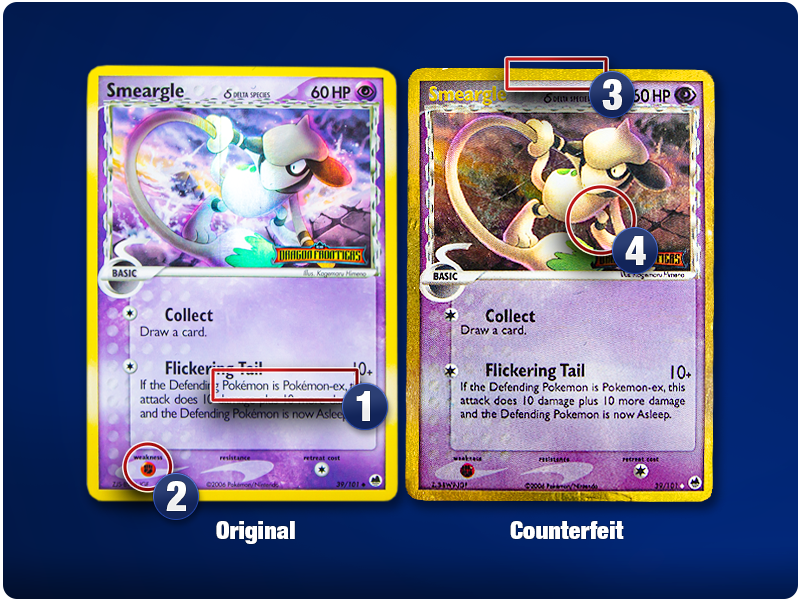
- Notice the accent on the word "Pokémon." If you ever see a card forgo this accent, it's a dead giveaway that it's a fake. It's unlikely that it would be a printing error.
- Notice the energy costs and weaknesses on both cards. In the case of the counterfeit, the symbol inside the circle takes up most of the symbol and is off-center. This will often happen with counterfeit cards and is a clear indication of a forgery.
- Notice the gold border. While gold-bordered cards do exist in Pokémon, they are limited to very specific cards – rare holos from δ Delta Species and Secret Rare Gold Cards. As this is neither, it must be a fake. Additionally, you can see the shoddy holographic effect on this card, which is inconsistent with the holographic effects on other Pokémon cards.
- Notice the vast difference in color between the two cards. The original card is extremely bright and colorful, which the card on the right does not effectively replicate. The color saturation is frequently different between the real thing and a fake.
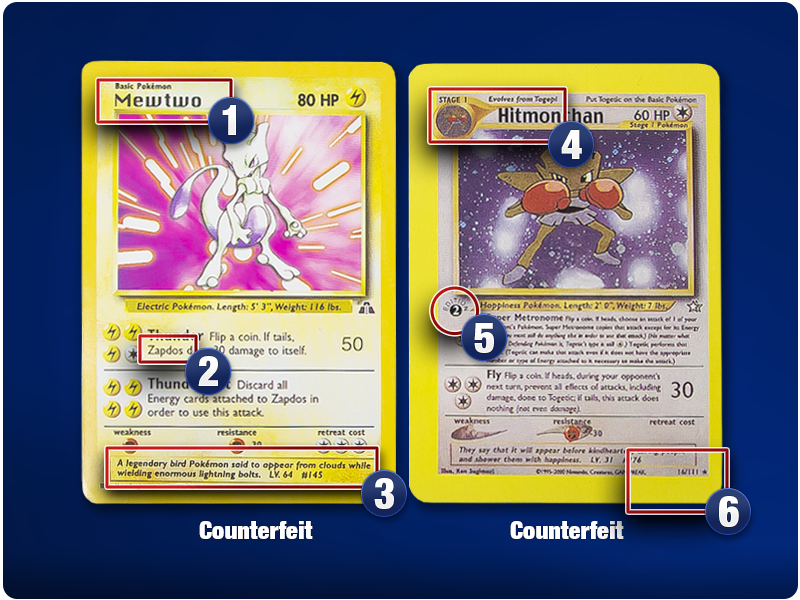
1. Notice the font. Pokémon cards have a consistent font and counterfeits will often use different fonts on their cards – in this case by quite a lot.
2+3. Notice the text on the card – it references Zapdos and not Mewtwo and leaves in Zapdos's flavor text. Counterfeiters frequently fail to properly edit the text they use, and it leads to mistakes like this.
4. Notice the evolution stage. Hitmonchan is a basic Pokémon, yet, on this card, it is a stage 1 Pokémon that evolves from Togepi. Counterfeiters often take cards and replace the images without properly adjusting the layout and text. You can spot these inconsistencies easily when you take a closer look.
5. It says it's a 2nd edition card, which is impossible. Pokémon has 1st edition and unlimited edition cards. There is no 2nd edition – this is another easy inconsistency to spot.
6. Notice the ridiculously thick border on the card. Real cards can be miscut, leading to slightly thicker borders, but there will never be this much space on a genuine card.
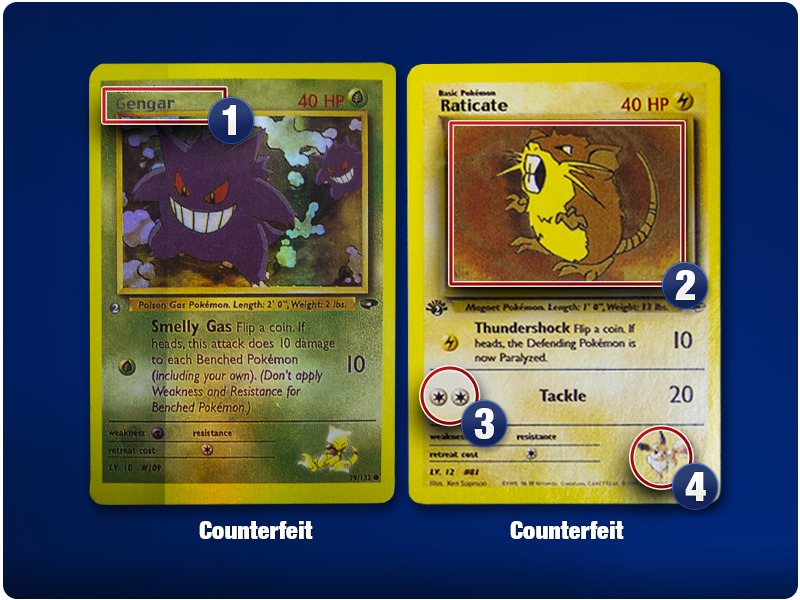
- Notice the Font Color. Card names aren't green and hit points aren't red. Make sure the font colors on your cards are consistent with the originals.
- The artwork is fake on this counterfeit. Be sure that the artwork on your cards matches up with the original. This is also a general recommendation. Comparing your cards to images of the original can really help identify the obvious inconsistencies that plague counterfeits.
- Notice the color saturation on the energy symbols. These, on counterfeits, will often fail to match up with the real deal.
- They used the card design of Gym leader cards for this. The face of the gym leader normally goes in this spot, but they instead filled it with a random Pokémon.
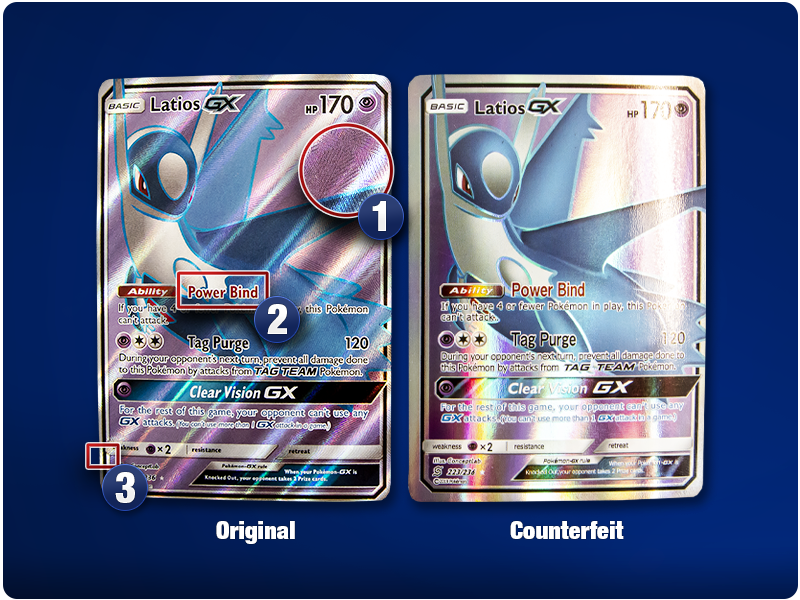
- Notice the texturing on the real GX card. Fakes are very rarely able to copy this texturing, which makes it much easier to tell when you have a GX fake. Note that very occasionally you will find a misprinted GX card that doesn't have this texturing. In this case, the other methods below should help you identify whether it's real or fake.
- Once again, look at the difference between the two fonts. You can clearly see the difference between the two "Power Bind" abilities.
- Notice the border between the two cards. The border on the original card is incredibly thin. The margin of error for these cuts is very small on real GX cards. On the fake, you see a much thicker border, which would never happen on the genuine article.
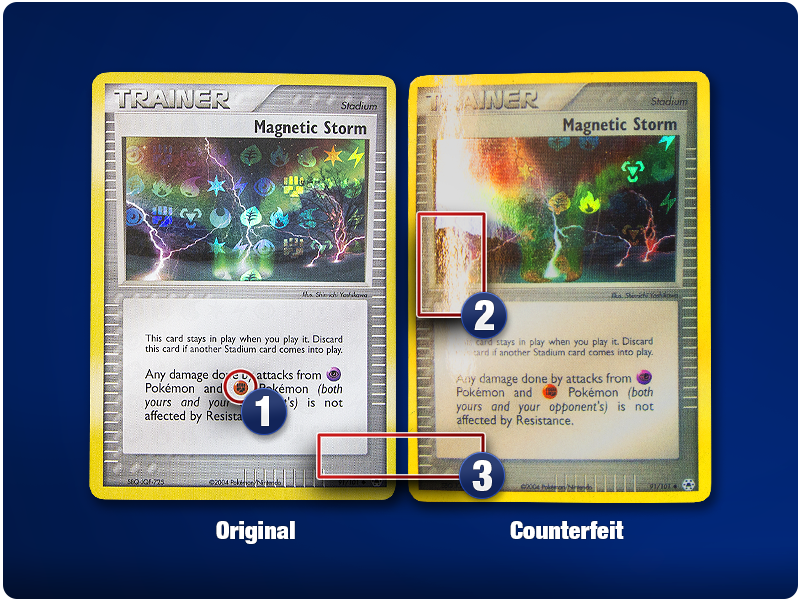
- Notice the energy symbol. On a real card, the center symbol is of a consistent size and is centered properly. On fakes, this is often, as you have seen here, not the case and you can see that here.
- The counterfeit is printed on glossy card stock. Counterfeits frequently "feel" very different when you touch the card stock. On the image, you can see the glare on the righthand card – a byproduct of the glossy card stock.
- Once again, you can see the difference in coloring and saturation. Comparing your cards to each other will often make the fakes stand out because of these coloring mistakes.
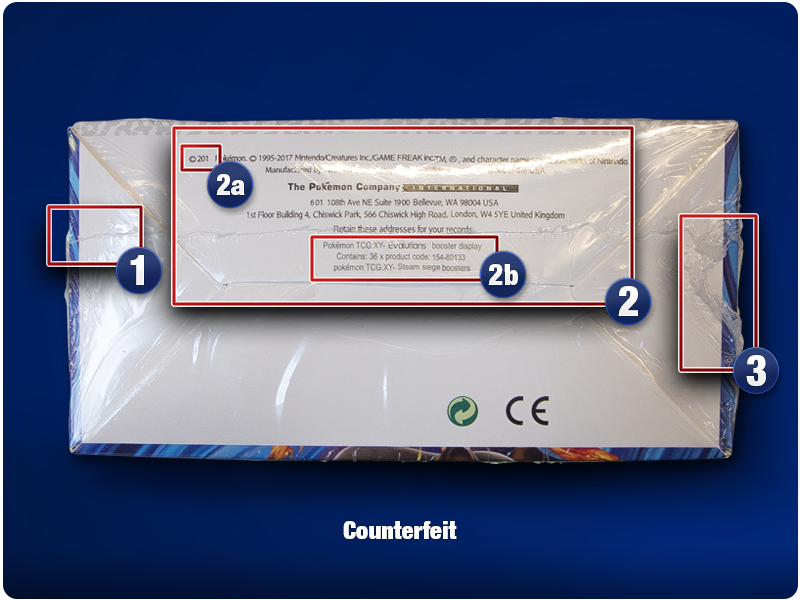
- The quality is different on fake sealed product from genuine sealed product. On fake product, you often see stretch marks or burn marks because the plastic is of lower quality and has difficulty handling the heat. This is not the case on real product, as the plastic is of higher quality, and therefore more resistant.
- Always check the text on a product, as there are often dead giveaways that show whether the sealed product is fake.
- Look at the copyright. Here, the counterfeiter picked the wrong year. These mistakes will never happen on a real product.
- The product description actively references a different product. This will never happen on a real box.
- The product is not properly sealed. The Pokémon Company seals their product in a very specific way, and never with more than one sealing stitch around the side of the box.

- Sealed product will always have the Pokémon watermark on the packaging. This is a Pokeball with Pokémon below it as text. Some counterfeits will copy the watermark but will often leave out the copyright symbol next to the "N" in "Pokémon."
- Booster packs in a real box are always positioned front-to-back and not left-to-right, as they are here.
- Once again, you can see the poor quality of the plastic in counterfeits here. Bubbles are forming near the stitch because of the heat – this will never happen with official sealed product.
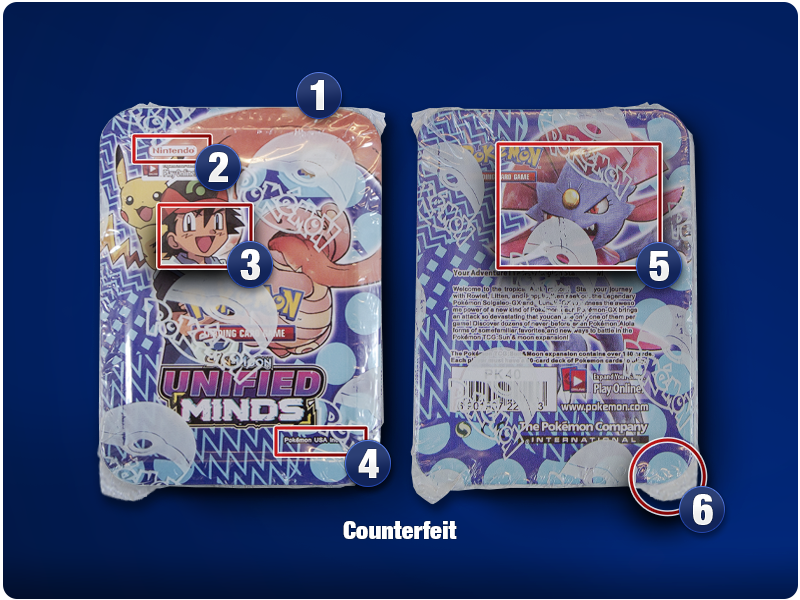
- This product doesn't exist. Double check the name of the tin or box when deciding whether to purchase it.
- Nintendo has not been involved with the Pokémon TCG for years, so the name shouldn't show up on product.
- Ash Ketchum does not exist in the TCG – so the artwork on this box is fake. There are a few Japanese promo cards that feature Ash. However, any English or European product that has Ash on it is fake.
- Pokémon USA inc. has not existed since 2009. Any product from after 2009 with this name is fake (Anything after the Diamond and Pearl series is after 2009).
- The image on this box is not TCG related – it comes from the Pokkén video game. Official sealed product will, of course, use TCG art.
- You'll notice that they have the watermark here, but there is no copyright symbol.

- Once again, you should see the official watermark here, but it isn't present on the counterfeit box.
- The background artwork is different between the two boxes. Pay attention to the symbols and make sure they match.
- Notice the color saturation on the counterfeit. It's much lighter and the shadows are missing when compared to the real product.
If you still have any questions or wish to view your open or closed tickets, please visit the Help Desk.